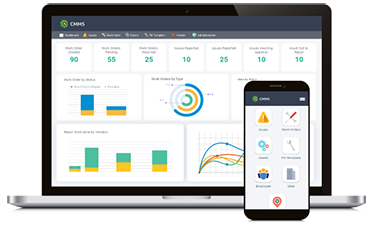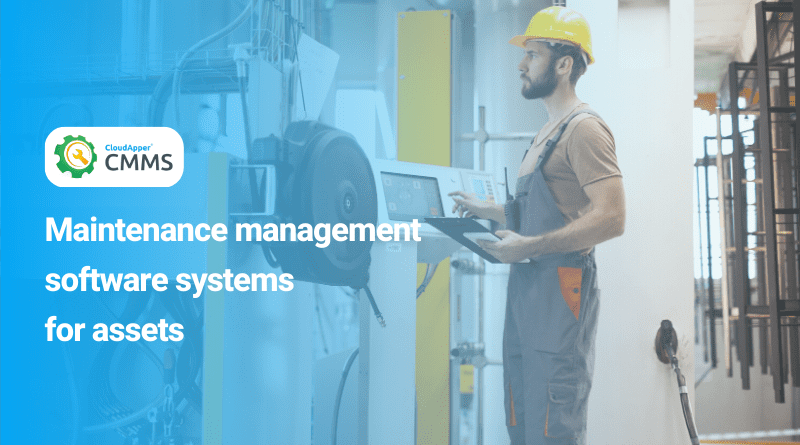Table of Contents
Choosing the right asset management software is crucial for the performance of your business. It depends on which style of asset management you prefer to stick with. In this blog post, we will cover the 3 main asset management styles, how they differ from each other, and explain which of them analyzes data for actionable insights the best way.
APM Style in Asset Management
Asset performance management (APM) is a technique used to manage assets in order to meet corporate goals. APM integrates traditional asset management techniques with modern digital technologies to improve availability, operational efficiency, and business success.
EAM Style in Asset Management
Enterprise asset management (EAM) is a system that businesses use to track and maintain their physical assets. EAM can be used to plan, optimize, execute, and track all maintenance tasks. This includes planning for priorities, skills, resources, equipment needs, and cost-related activities.
CMMS Style in Asset Management
A computerized maintenance management system (CMMS) centralizes maintenance data, simplifies methods, and automates operations to increase production. It improves the use, accessibility, and longevity of equipment, fleets, infrastructure, facilities, or operations.
The Distinction Between CMMS, EAM, and APM
EAM and APM solutions differ in the way they measure performance. An EAM solution is a system for maintaining work orders for each maintenance task throughout an asset’s existence. An APM solution works more like a decision-making engine, providing continuous insights into asset performance and dependability.
Depending on whether you approach asset management from an EAM or APM perspective, the road to digitalization will look different.
Importance of Data in Asset Management
Data-sharing technologies are becoming increasingly prevalent in almost every industry. Every time we visit a website, we leave behind a record of everything we do, look at, and click on. Businesses that collect this data can use it to retarget customers and tailor their content to appeal to them.
Data analysis has been shown to help businesses increase efficiency and profitability. In asset-intensive industries, it makes sense to shift away from EAM-based asset management and toward an approach based on APM.
APM is designed to help you get the most value from asset data so that you can make informed decisions.
APM’s Ability to Analyze Data for Actionable Insights
If you have the right procedures, goals, and tools in place, it’s easy to turn data into valuable insights. Connecting your business analytics with useful information is a breeze. On the other hand, if you’re relying on legacy systems or outdated methods, that can drag down productivity and stability.
APM processes raw infrastructure data and monitors its flow and condition. This also helps create giant stores of customer data for more in-depth analysis later on.
The more data there is, the better the results, because APM has an inherent capacity to forecast trends and patterns.
As a result, you’ll get:
- Improved decision-making precision.
- Improved speed.
- Improved effectiveness.
How Insights Helping Businesses Achieve Long-Term Success
Past strategies can no longer compete in today’s ever-changing corporate environment. Business insight is a type of new, unique, or important corporate knowledge.
Businesses achieve long-term success by having keen insights and then providing their employees with the analytical skills required for an effective response.
Your workers are constantly making decisions that affect various aspects of the business, such as whether to keep or discard certain assets. By monitoring different parameters on an ongoing basis, you can help them base their choices on current conditions rather than static information.
Different Asset Management Approaches
Policy-based asset management programs focus on long-term, lifecycle evaluation of assets. They help organizations define goals and priorities for infrastructure management, which can vary from one organization to another.
The goal of performance-based asset management is to manage an infrastructure system so that it performs optimally against predetermined goals. This approach compares the benefits and costs of various investments in order to identify risks.
Takeaways
When it comes to asset management, different firms have varying degrees of maturity. You may speak with APM and EAM specialists from digital transformation businesses to get a brief overview and learn how to improve your asset management. Some enterprises may not require APM. Knowing which solutions are appropriate for your organization is essential.
Contact us now to get to know how you can improve the safety and efficiency of your business assets while ensuring peak performance at a more affordable, long-term cost.
What is CloudApper AI Platform?
CloudApper AI is an advanced platform that enables organizations to integrate AI into their existing enterprise systems effortlessly, without the need for technical expertise, costly development, or upgrading the underlying infrastructure. By transforming legacy systems into AI-capable solutions, CloudApper allows companies to harness the power of Generative AI quickly and efficiently. This approach has been successfully implemented with leading systems like UKG, Workday, Oracle, Paradox, Amazon AWS Bedrock and can be applied across various industries, helping businesses enhance productivity, automate processes, and gain deeper insights without the usual complexities. With CloudApper AI, you can start experiencing the transformative benefits of AI today. Learn More

















